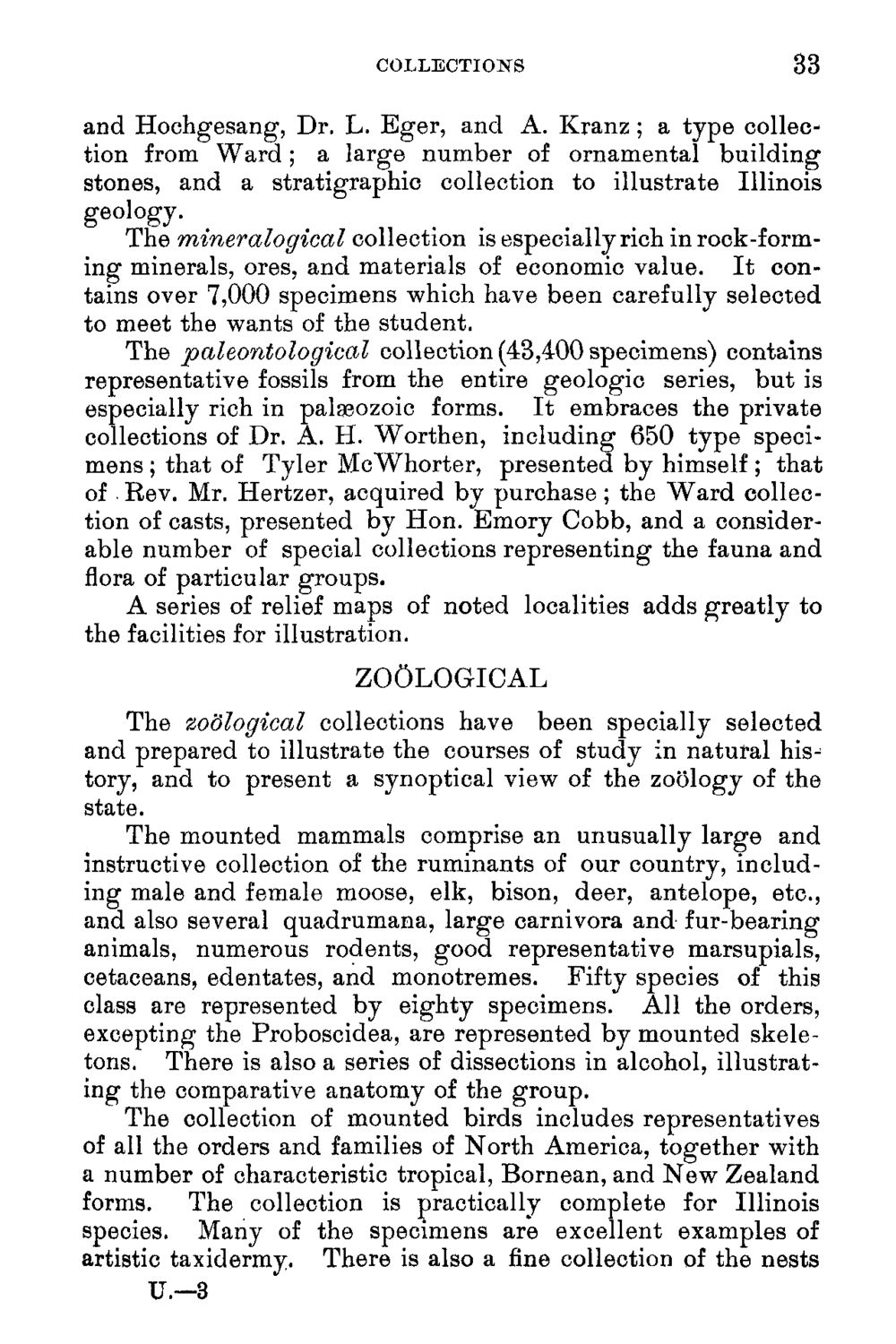| |
| |
Caption: Course Catalog - 1895-1896
This is a reduced-resolution page image for fast online browsing.

EXTRACTED TEXT FROM PAGE:
COLLECTIONS 33 and Hochgesang, Dr. L. Eger, and A. Kranz ; a type collection from Ward; a large number of ornamental building stones, and a stratigraphic collection to illustrate Illinois geology. The mineralogical collection is especially rich in rock-forming minerals, ores, and materials of economic value. It contains over 7,000 specimens which have been carefully selected to meet the wants of the student. The paleontological collection (43,400 specimens) contains representative fossils from the entire geologic series, but is especially rich in palaeozoic forms. It embraces the private collections of Dr. A. H. Worthen, including 650 type specimens ; that of Tyler McWhorter, presented by himself ; that of Rev. Mr. Hertzer, acquired by purchase ; the Ward collection of casts, presented by Hon. Emory Cobb, and a considerable number of special collections representing the fauna and flora of particular groups. A series of relief maps of noted localities adds greatly to the facilities for illustration. ZOOLOGICAL The zo'dlogical collections have been specially selected and prepared to illustrate the courses of study in natural history, and to present a synoptical view of the zoology of the state. The mounted mammals comprise an unusually large and instructive collection of the ruminants of our country, including male and female moose, elk, bison, deer, antelope, etc., and also several quadrumana, large carnivora and fur-bearing animals, numerous rodents, good representative marsupials, cetaceans, edentates, and monotremes. Fifty species of this class are represented by eighty specimens. All the orders, excepting the Proboscidea, are represented by mounted skeletons. There is also a series of dissections in alcohol, illustrating the comparative anatomy of the group. The collection of mounted birds includes representatives of all the orders and families of North America, together with a number of characteristic tropical, Bornean, and New Zealand forms. The collection is practically complete for Illinois species. Many of the specimens are excellent examples of artistic taxidermy. There is also a fine collection of the nests U.—3
| |